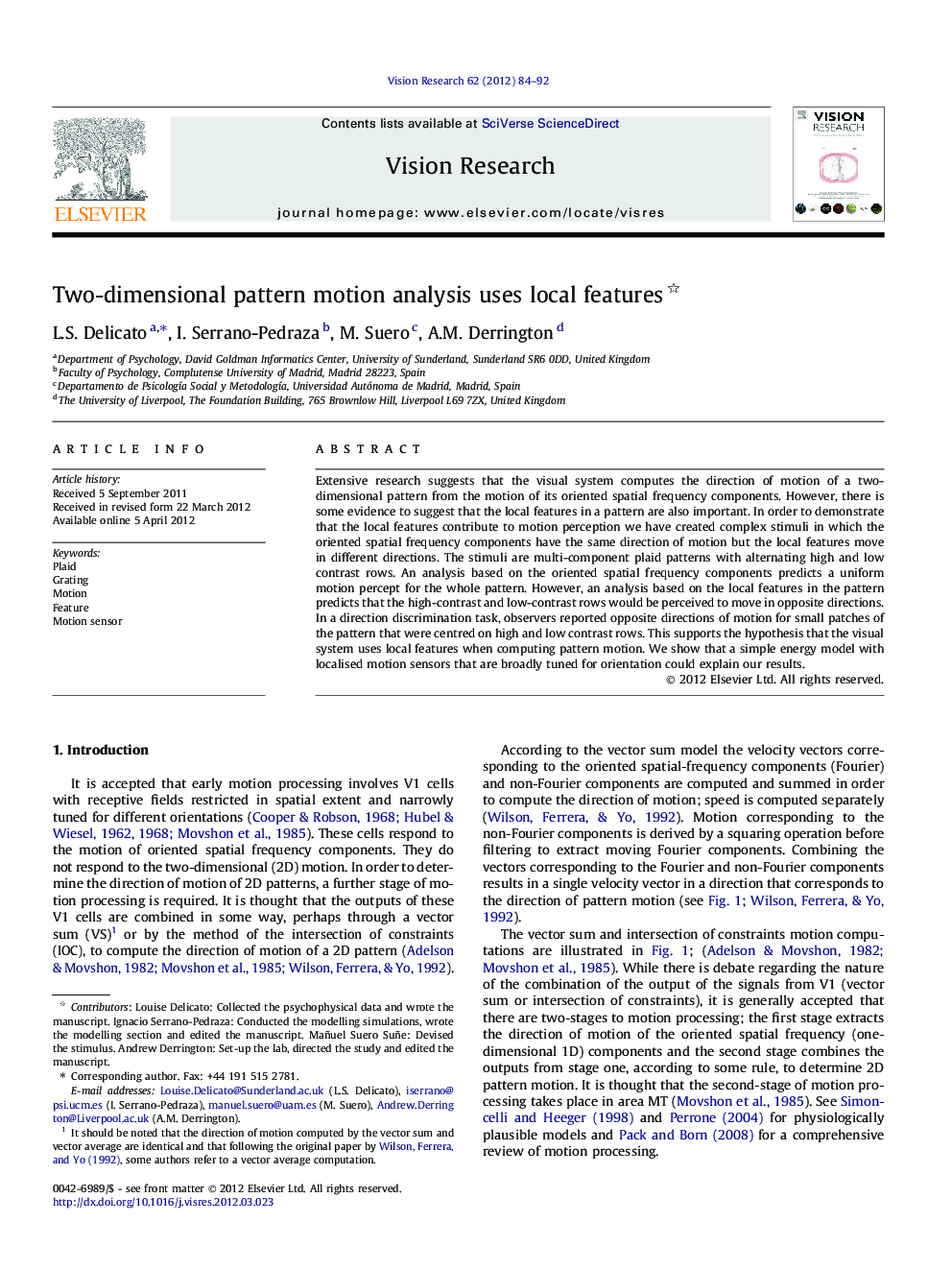| Article ID | Journal | Published Year | Pages | File Type |
|---|---|---|---|---|
| 6203685 | Vision Research | 2012 | 9 Pages |
Extensive research suggests that the visual system computes the direction of motion of a two-dimensional pattern from the motion of its oriented spatial frequency components. However, there is some evidence to suggest that the local features in a pattern are also important. In order to demonstrate that the local features contribute to motion perception we have created complex stimuli in which the oriented spatial frequency components have the same direction of motion but the local features move in different directions. The stimuli are multi-component plaid patterns with alternating high and low contrast rows. An analysis based on the oriented spatial frequency components predicts a uniform motion percept for the whole pattern. However, an analysis based on the local features in the pattern predicts that the high-contrast and low-contrast rows would be perceived to move in opposite directions. In a direction discrimination task, observers reported opposite directions of motion for small patches of the pattern that were centred on high and low contrast rows. This supports the hypothesis that the visual system uses local features when computing pattern motion. We show that a simple energy model with localised motion sensors that are broadly tuned for orientation could explain our results.
⺠Local and global motion analyses make opposite predictions for new complex plaids. ⺠Local features or edges are important for two-dimensional (2D) motion perception. ⺠Short, broad receptive fields could detect the local features within the 2D pattern.
